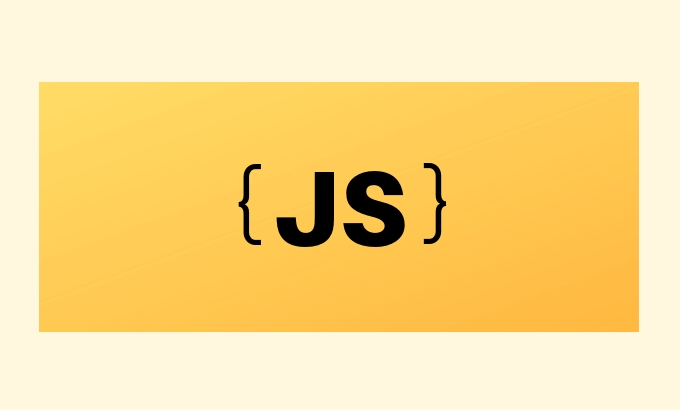Recursion in JavaScript should be used with care due to potential performance and stack overflow risks. 1) Understand the basics: recursion involves a function calling itself with a base case to stop and a recursive case to continue. 2) Use tail recursion when possible, as it reduces memory usage by making the recursive call the last action in the function, though support for tail call optimization is limited. 3) Know when to avoid recursion, such as with large data sets, in environments without TCO, or when debugging becomes too complex. 4) Choose recursion selectively for problems where it enhances readability, like tree traversal, but use iteration or optimization techniques like memoization for efficiency in cases like Fibonacci sequences. Always consider adding safety checks when using recursion in performance-sensitive contexts.

Recursion in JavaScript can be a powerful tool when used correctly, but it’s also easy to get tripped up if you're not careful. The key is understanding when and how to use it without causing performance issues or stack overflows.

Understand the basics of recursion
At its core, recursion means a function calls itself until a certain condition is met. Every recursive function needs two things: a base case (to stop the recursion) and a recursive case (where the function calls itself with modified input).

For example, calculating the factorial of a number can be done recursively:
function factorial(n) {
if (n === 0) return 1; // base case
return n * factorial(n - 1); // recursive case
}This works fine for small values of n, but if you try something like factorial(100000), you’ll likely run into a maximum call stack exceeded error. That’s because each recursive call adds a frame to the JavaScript call stack, and browsers have limits on how deep that can go.

Use tail recursion when possible
JavaScript supports tail call optimization (TCO) in strict mode according to the ES6 spec, but most engines don’t fully implement it yet — especially V8 (used by Chrome and Node.js). Still, writing tail-recursive functions is a good practice and may help in environments where TCO is supported.
A tail-recursive function makes sure the recursive call is the last thing executed in the function, so no additional computation happens after the call returns.
Here's a tail-recursive version of the factorial function:
function factorial(n, acc = 1) {
if (n === 0) return acc;
return factorial(n - 1, n * acc);
}In this version, all the work is done before making the next recursive call, which helps reduce memory usage on the stack. Even if your environment doesn't support TCO yet, structuring your recursion this way can make it easier to convert to iteration later if needed.
Know when to avoid recursion
While recursion can make code more readable and elegant, it's not always the best choice. Here are a few situations where you should consider using loops instead:
- When dealing with very large data sets or deep recursion.
- If you're working in an environment without proper tail call optimization.
- When debugging might become overly complex due to many nested calls.
Also, keep in mind that some algorithms — like depth-first search or tree traversal — often feel more natural with recursion, while others, like Fibonacci sequences, can quickly become inefficient unless memoization or dynamic programming techniques are applied.
If you do choose recursion for performance-sensitive code, consider adding a safety check or limiting the input size to avoid crashes.
Effectively implementing recursion in JavaScript comes down to understanding its limitations and knowing when it's appropriate. It’s clean and expressive, but not always efficient — especially without proper handling.
The above is the detailed content of Implementing recursion effectively in JavaScript. For more information, please follow other related articles on the PHP Chinese website!

Hot AI Tools

Undress AI Tool
Undress images for free

Undresser.AI Undress
AI-powered app for creating realistic nude photos

AI Clothes Remover
Online AI tool for removing clothes from photos.

Clothoff.io
AI clothes remover

Video Face Swap
Swap faces in any video effortlessly with our completely free AI face swap tool!

Hot Article

Hot Tools

Notepad++7.3.1
Easy-to-use and free code editor

SublimeText3 Chinese version
Chinese version, very easy to use

Zend Studio 13.0.1
Powerful PHP integrated development environment

Dreamweaver CS6
Visual web development tools

SublimeText3 Mac version
God-level code editing software (SublimeText3)

Hot Topics
 Recursive implementation of C++ functions: Is there a limit to recursion depth?
Apr 23, 2024 am 09:30 AM
Recursive implementation of C++ functions: Is there a limit to recursion depth?
Apr 23, 2024 am 09:30 AM
The recursion depth of C++ functions is limited, and exceeding this limit will result in a stack overflow error. The limit value varies between systems and compilers, but is usually between 1,000 and 10,000. Solutions include: 1. Tail recursion optimization; 2. Tail call; 3. Iterative implementation.
 Recursive program to find minimum and maximum elements of array in C++
Aug 31, 2023 pm 07:37 PM
Recursive program to find minimum and maximum elements of array in C++
Aug 31, 2023 pm 07:37 PM
We take the integer array Arr[] as input. The goal is to find the largest and smallest elements in an array using a recursive method. Since we are using recursion, we will iterate through the entire array until we reach length = 1 and then return A[0], which forms the base case. Otherwise, the current element is compared to the current minimum or maximum value and its value is updated recursively for subsequent elements. Let’s look at various input and output scenarios for this ?Input ?Arr={12,67,99,76,32}; Output ?Maximum value in the array: 99 Explanation &mi
 Do C++ lambda expressions support recursion?
Apr 17, 2024 pm 09:06 PM
Do C++ lambda expressions support recursion?
Apr 17, 2024 pm 09:06 PM
Yes, C++ Lambda expressions can support recursion by using std::function: Use std::function to capture a reference to a Lambda expression. With a captured reference, a Lambda expression can call itself recursively.
 Count the number of occurrences of a substring recursively in Java
Sep 17, 2023 pm 07:49 PM
Count the number of occurrences of a substring recursively in Java
Sep 17, 2023 pm 07:49 PM
Given two strings str_1 and str_2. The goal is to count the number of occurrences of substring str2 in string str1 using a recursive procedure. A recursive function is a function that calls itself within its definition. If str1 is "Iknowthatyouknowthatiknow" and str2 is "know" the number of occurrences is -3. Let us understand through examples. For example, input str1="TPisTPareTPamTP", str2="TP"; output Countofoccurrencesofasubstringrecursi
 Recursive implementation of C++ functions: Comparative analysis of recursive and non-recursive algorithms?
Apr 22, 2024 pm 03:18 PM
Recursive implementation of C++ functions: Comparative analysis of recursive and non-recursive algorithms?
Apr 22, 2024 pm 03:18 PM
The recursive algorithm solves structured problems through function self-calling. The advantage is that it is simple and easy to understand, but the disadvantage is that it is less efficient and may cause stack overflow. The non-recursive algorithm avoids recursion by explicitly managing the stack data structure. The advantage is that it is more efficient and avoids the stack. Overflow, the disadvantage is that the code may be more complex. The choice of recursive or non-recursive depends on the problem and the specific constraints of the implementation.
 How to use Vue form processing to implement recursive nesting of forms
Aug 11, 2023 pm 04:57 PM
How to use Vue form processing to implement recursive nesting of forms
Aug 11, 2023 pm 04:57 PM
How to use Vue form processing to implement recursive nesting of forms Introduction: As the complexity of front-end data processing and form processing continues to increase, we need a flexible way to handle complex forms. As a popular JavaScript framework, Vue provides us with many powerful tools and features to handle recursive nesting of forms. This article will introduce how to use Vue to handle such complex forms, and attach code examples. 1. Recursive nesting of forms In some scenarios, we may need to deal with recursive nesting.
 C++ Recursion Advanced: Understanding Tail Recursion Optimization and Its Application
Apr 30, 2024 am 10:45 AM
C++ Recursion Advanced: Understanding Tail Recursion Optimization and Its Application
Apr 30, 2024 am 10:45 AM
Tail recursion optimization (TRO) improves the efficiency of certain recursive calls. It converts tail-recursive calls into jump instructions and saves the context state in registers instead of on the stack, thereby eliminating extra calls and return operations to the stack and improving algorithm efficiency. Using TRO, we can optimize tail recursive functions (such as factorial calculations). By replacing the tail recursive call with a goto statement, the compiler will convert the goto jump into TRO and optimize the execution of the recursive algorithm.
 Detailed explanation of C++ function recursion: application of recursion in string processing
Apr 30, 2024 am 10:30 AM
Detailed explanation of C++ function recursion: application of recursion in string processing
Apr 30, 2024 am 10:30 AM
A recursive function is a technique that calls itself repeatedly to solve a problem in string processing. It requires a termination condition to prevent infinite recursion. Recursion is widely used in operations such as string reversal and palindrome checking.






